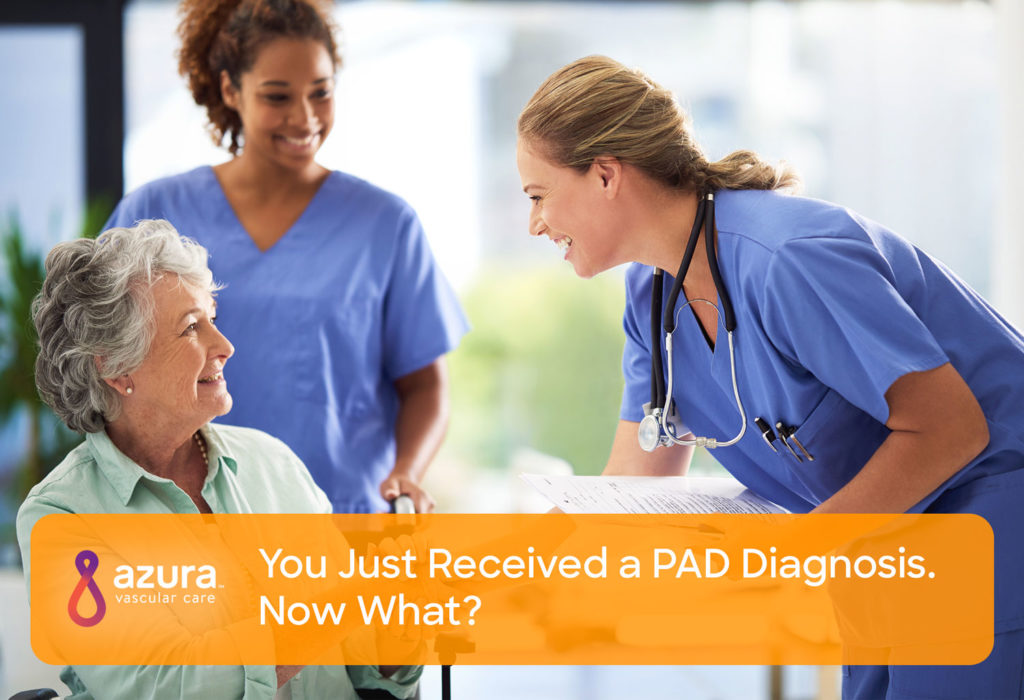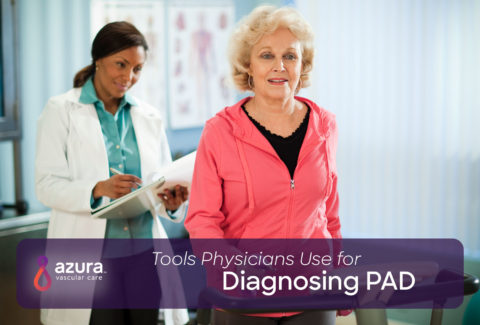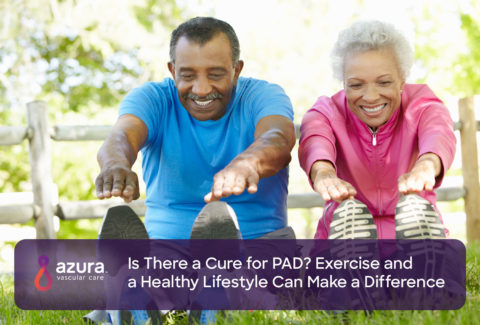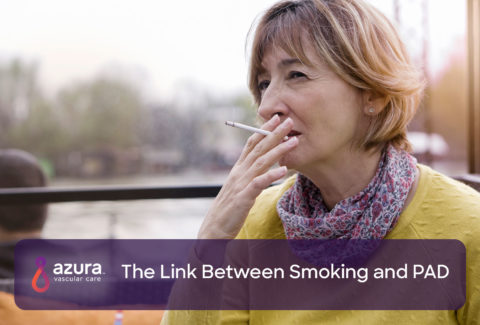
News of a PAD diagnosis can be an emotional experience. For most, living with PAD calls for some lifestyle changes, such as adding exercise or quitting smoking. For others, the condition may require medication or endovascular treatment to keep the disease from progressing.
PAD Is a Serious Condition
Without treatment, PAD may result in life-threatening tissue damage due to poor blood flow. In extreme cases, such as critical limb ischemia, amputation of part of the leg or foot may be needed.
Peripheral artery disease treatment will take into consideration how well you are able to complete normal daily activities such as putting on your shoes, climbing the stairs, and grocery shopping, and it also takes into account the level of pain you feel while doing these tasks. (i)
Your doctor may ask questions to assess how a PAD diagnosis is affecting your quality of life, such as: (i)
- What would you like to be able to do if you did not have the pain?
- What changes have you made in order to live with the pain?
Your doctor will develop a recommended plan of PAD treatment options based on your specific symptoms, risk factors, and diagnostic test results.
Treatment Goals for Patients with a PAD Diagnosis
The goals for PAD treatment include: (ii)
- Reducing the risk of stroke and heart attack
- Relieving leg pain or muscle cramping, known as claudication
- Improving mobility
- Improving the quality of life
- Preventing complications
Lifestyle Changes
Heart-healthy lifestyle changes can help slow or stop the progression of PAD and other related problems, such as coronary heart disease, heart attack, stroke, and transient ischemic attack. (ii)
If you smoke, quitting smoking is the single most important step you can take to reduce your risk of complications due to a PAD diagnosis. (iii)
Another important change you can make is to alter your diet. In general, strive to limit saturated fat, trans fat, sodium, red meat, sweets, and sugar-sweetened beverages.
Start Walking with Supervised Exercise
In addition to quitting smoking and eating more healthy, your doctor may prescribe a PAD exercise program. The effectiveness of PAD treatment is often measured by how far a patient can walk without feeling pain. A supervised exercise training program can help increase the distance you can walk pain-free. And, regular exercise helps train your muscles to use oxygen more efficiently. (iii)
Your doctor can help design an exercise plan that’s appropriate for you or refer you to a supervised PAD exercise program, most likely conducted at a hospital or other healthcare facility.
Medications to Treat PAD
If lifestyle changes are not enough, your doctor may prescribe medication to help treat PAD and its related risk factors and symptoms. These medications may include: (iii,iv)
It’s important to note that people with a peripheral artery disease diagnosis should avoid over-the-counter cold remedies that contain pseudoephedrine, which can constrict blood vessels and increase your PAD symptoms.
Minimally Invasive Procedures for PAD
If lifestyle changes and exercise don’t relieve the symptoms and adequately improve a patient’s quality of life, your doctor may recommend minimally invasive endovascular treatment. (i,iii)
While hearing a PAD diagnosis may be scary, there are lifestyle changes, medication and interventional treatments that can improve your health and boost your quality of life.
For more information, call 844-LEG-DOCS (534-3627) to schedule an appointment with a vascular specialist today.
Sources:
i Bailey, M. A., Griffin, K. J., & Scott, D. J. A. (2014). Clinical Assessment of Patients with Peripheral Arterial Disease. Seminars in Interventional Radiology, 31(4), 292–299. http://doi.org/10.1055/s-0034-1393964, https://www.ncbi.nlm.nih.gov/pmc/articles/PMC4232424/ (accessed April 9, 2018)
ii National Heart, Lung, and Blood Institute. Peripheral Artery Disease. https://www.nhlbi.nih.gov/health-topics/peripheral-artery-disease (accessed April 9, 2018)
iii Mayo Clinic. Peripheral artery disease (PAD). https://www.mayoclinic.org/diseases-conditions/peripheral-artery-disease/diagnosis-treatment/drc-20350563 (accessed April 9, 2018)
iv Cleveland Clinic. Peripheral Artery Disease (PAD): Treatment Options. https://my.clevelandclinic.org/health/diseases/17357-peripheral-artery-disease-pad/treatment-options (accessed April 9, 2018)



